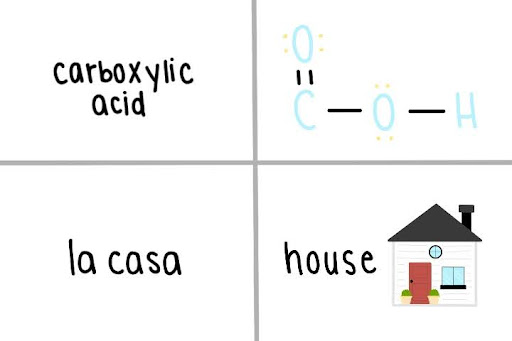The reality of ADHD
The perception of ADHD in the media in comparison to the reality can be harmful and add to the ongoing stigma surrounding the disorder.
December 15, 2021
3.3 million children between the ages of 12 and 18 have been diagnosed with ADHD, according to a study performed in 2016 by the CDC. I am one of those 3.3 million.
ADHD — Attention Deficit Hyperactivity Disorder — is a mental disorder in which symptoms can include hyperactivity, impulsivity and lack of focus. Although a greater population are diagnosed at a young age, there are also many who have been diagnosed later in their childhood and even in adulthood. Individuals with ADHD can also be referred to as “neurodivergent,” meaning that their cognitive process and brain type differs from those who do not have ADHD. Neurodivergent brains process information differently than non-neurodivergent brains tend to and often can be written off as laziness or poor work ethic, but these statements are often false. Teenagers with ADHD are often written off to be lazy and incapable of functioning at the same level as individuals who do not have ADHD because of how their symptoms present, but looks can be deceiving.
In March of my freshman year, the entire world drastically shifted into lockdown due to the COVID-19 pandemic, and if I thought school was difficult prior to turning to remote learning, virtual learning was another story. The two months lingered on for what seemed like years; each day a carbon-copy of yesterday. For several hours a day, I would stare at the computer screen blankly as if I was waiting for the assignment to do itself, some days accomplishing nothing at all. The lack of structure sent me into an endless spiral with the absence of any sort of drive for productivity, resulting in not only a decline in my educational progress, but additionally a diagnosis with ADHD in June of 2020.
Following the diagnosis, everything seemed to make sense again. I finally felt like I had the explanation to many unanswered questions I had about myself and my internal thought process. I no longer questioned why the way math was taught in school was different from how my brain processed it, or the reason I would be obsessed with a specific hobby and drop all others, or why responding to a text message felt like a painfully impossible task. I finally felt like I understood myself. But regardless of these new helpful discoveries, I felt inclined to hide them, even though they had always been there. Many individuals diagnosed with ADHD often subconsciously “mask” their symptoms as a way to “fit in” and be presented as if they were not living with ADHD, but their symptoms are only covered externally. Masking can be destructive to an ADHD mind because masking often includes attempting to imitate the actions of others and it becomes easier to lose touch with the reality of who they are in comparison to who they are trying to be, all in an effort to feel more accepted socially. Although on the outside one may mask their ADHD, it is far more difficult to cover up internal and cognitive effects.
When portrayed in the media, ADHD usually consists of lack of focus, constant bouncing off the walls being a disruption in the classroom and in other settings where it may be inappropriate. Although in some cases this may be true, it is a stereotypical view causing detrimental effects. ADHD is only seen as the “hyperactivity” aspect due to the lack of knowledge on the subject, which creates a face of ADHD different from reality of those who experience symptoms first-hand, enhancing the stigma behind the disorder. Deceitful portrayal of ADHD and the behaviors of those diagnosed is one of the main factors that lead to masking and neglect of proper diagnosis and treatment. There is great importance in shifting the perception of ADHD to a more realistic representation of the disorder, in order to lessen the stigma that those experiencing the disorder receive and to bring about more knowledge to the public eye.
Another effect of the immense stigma is overlooking the positive traits neurodivergent minds hold. Those with ADHD often experience hyperfocus, dialing on a specific task with determination to complete it, a very beneficial skill in the workplace. In addition, neurodivergent minds are often more creative as they view the world differently. These are very few of the many advantages which ADHD minds bring to the table. Pediatric Neurologist Max Wiznitzer emphasizes the positive impacts of neurodivergence and the importance of addressing them in addition to the downfalls.
“If the negative impacts of the behavior far outweigh the positives, then you’re never going to see the positive aspects,” said Wiznitzer, from WebMd.
After establishing the reality of ADHD, how can we strive to eliminate the stigma behind ADHD and be more inclusive in the classroom, workplace and society as a whole? There is great importance in learning the truth of ADHD in comparison to society’s harmful and false outlook on it. Additionally, it is crucial to reveal the perspective of both positive and negative aspects of neurodivergence to allow society room to grow to bring about acceptance to the ADHD community.








Ur fav statistician • Dec 17, 2021 at 1:59 pm
Really love what you did here queen!